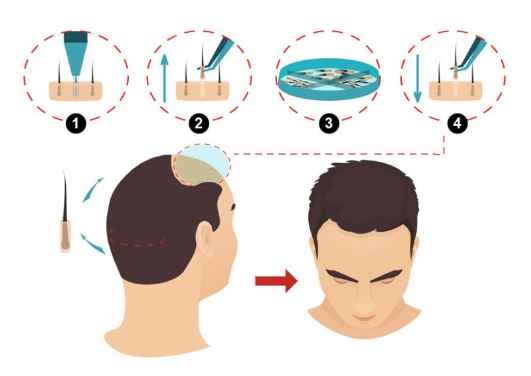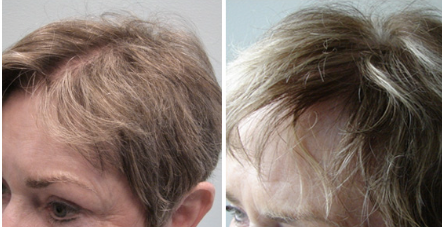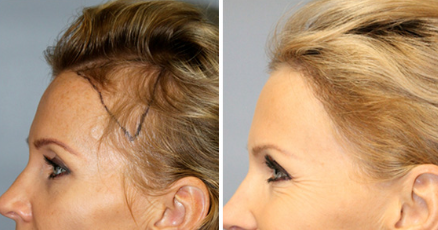When performing follicular Unit Extraction (FUE), a surgeon removes every other hair graft from a donor region and transplants the follicles to an area that’s bald or has thinning hair. The transplants are made to look like naturally growing hair although some circular scarring can occur. This procedure yields natural-looking results and is best performed on patients with bald spots on the smaller side or patients trying to cover scars.
Request an Appointment

The best candidate for FUE has high-density hair–with FUE every second or third graft is removed from the donor site, meaning it does thin the area of the donor site but high-density hair in that area makes it less noticeable. It’s optimal for filling in eyebrows, scars and other smaller patches. Patients with bald spots caused by trauma such as burns or scaring are great candidates for FUE. Persons having a predictable pattern of hereditary hair loss may also be good candidates because surgeons can predict which areas will thin in advance. FUE is not the best option for patients wanting to cover a large bald area.




Being an outpatient surgery, patients undergoing FUE have a relatively easy recovery process and don’t spend the night after receiving the procedure. FUE does not create a linear scar and doesn’t require stitches making it an even easier recovery than FUT. The surgeon will wrap the patient’s head and instruct him to keep it elevated–even while sleeping–to reduce the swelling. Patients are advised to abstain from showering for 24 hours as to not disrupt the implants. The implants and donor site will begin scabbing over meaning the healing process is beginning, and patients are advised to gently cleanse both areas with a cotton ball to keep the potential for infection at bay without dislodging the implants. Patients shouldn’t be concerned when they begin shedding the implanted hair between 2 weeks and 2 months after their surgery. By the third and fourth month, the new hair will grow back and by the fifth and sixth months, the patient’s hair will be 2 – 3 inches long.